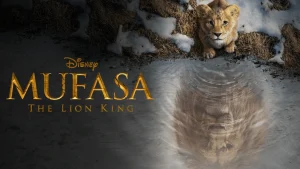Why the Ukrainian Crisis Could Seriously Impact the U.S.
February 9, 2022
The tensions between Ukraine and Russia started in 1991 when Ukraine became an independent country from Russia because of the collapse of the Soviet Union. Since 1991, the lands and groups in Ukraine have been subject to foreign domination. Russian history claims that their identity was born where Kiev/Kyiv, Ukraine’s capital, is today. Vladimir Putin, the President of Russia, believes that Ukraine is a part of Russia, and therefore isn’t independent. Ukraine wants to join the West but believes that poses a threat to Russia’s national security. Ukraine disagrees. Thus the tension between the two countries.
NATO is the North Atlantic Treaty Organization. Its purpose is to guarantee the freedom and security of its members through political and military means. They promote democratic values. Neither Russia nor Ukraine currently belongs to NATO, but Russia wants NATO to return to its pre-1997 borders and does not want Ukraine to join it.
The Bush administration pushed NATO to announce that Ukraine and Georgia (this country borders Russia) would ultimately join NATO. Russia invaded Georgia later that year, and Ukraine created a new government under Viktor Yanukovych. Yanukovych was planning an association agreement with the European Union, instead of joining NATO. However, Russia pressured Yanukovych into not singing with the European Union, and he was exiled in Russia in 2014.
Russia then began a hybrid war against Ukraine, intending to destabilize Ukraine’s internal politics. Russia also took over Ukraine’s Crimea peninsula, which had been part of Ukraine since 1954.
Currently, Russian forces still support Eastern Ukraine where many Ukrainian separatists live. However, the “Budapest Memorandum,” signed in 1994, is an agreement with Ukraine, the United States, and the United Kingdom that guarantees Ukraine’s borders in exchange for Ukraine’s surrender of the nuclear weapons that were on its territory when the Soviet Union collapsed.
Most people speculate that Ukrainian membership in NATO would take decades. However, Putin has increased tensions recently because of the political polarization in the U.S. and the departure from Afghanistan. Putin wants to utilize the tensions between the U.S. and China to gain China on their side to strengthen Russia’s security position in Europe. There were also many issues between the U.S. and Europe while President Trump was in office. Currently, Russia has placed 100,000 troops along the Ukraine border, to try to get Ukraine to join NATO without going to war.
Recently, there have been cyber attacks on Ukraine and the Russian press suggests that a Ukrainian invasion could be unavoidable. However, Russia could use a fear tactic to achieve its objectives more cheaply and effectively. An invasion would be expensive for Russia, even though Russian forces are more experienced and developed.
So far, the Biden Administration has shown its commitment to diplomacy by describing the consequences of a Russian attack on Ukraine. Although, the U.S. should be concerned about this situation because post-WWII there has been a principle that borders shouldn’t be broken. The U.S. has a legal, treaty obligation to defend the security of all 30 NATO members. A Russian invasion of Ukraine would be destabilizing to our allies and would demand a massive military response which is costly.







